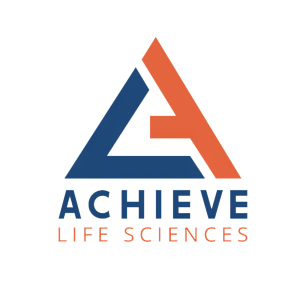Achieve Life Sciences Announces Granting of New Hire Inducement Award
Achieve Life Sciences (Nasdaq: ACHV) announced an inducement grant of stock options to a new employee, approved by the Board of Directors on January 25, 2023. The grant includes options to purchase 15,000 shares of common stock, serving as a material inducement for the employee's hiring, as per Nasdaq Listing Rule 5635(c)(4). The options will vest over four years, with 25% vesting at the one-year mark, and the remainder vesting monthly, contingent on continued employment. The options will have a 10-year term and an exercise price equal to the stock’s closing price on the grant date.
Achieve focuses on developing cytisinicline for smoking cessation, aimed at addressing the global nicotine addiction epidemic.
- Issuance of stock options to a new employee may enhance talent acquisition.
- Options vesting schedule encourages employee retention over four years.
- None.
SEATTLE, Wash and VANCOUVER, British Columbia, Jan. 27, 2023 (GLOBE NEWSWIRE) -- Achieve Life Sciences, Inc. (Nasdaq: ACHV), a late-stage pharmaceutical company committed to the global development and commercialization of cytisinicline for smoking cessation and nicotine addiction, today announced that the Company has issued an inducement grant of stock options to a new employee.
Achieve’s Board of Directors approved the new employment inducement grant to purchase 15,000 shares of Achieve’s common stock with the grant awarded on January 25, 2023. Achieve granted the stock options as a material inducement to the new employee for entering into an employment agreement with Achieve in accordance with Nasdaq Listing Rule 5635(c)(4).
The stock options approved under the inducement grant were issued pursuant to a stock option agreement on terms substantially similar to Achieve’s 2018 Equity Incentive Plan and have a per share exercise equal to the closing price of Achieve’s common stock on January 25, 2023. The stock options vest over four years, with
About Achieve and Cytisinicline
Achieve’s focus is to address the global smoking health and nicotine addiction epidemic through the development and commercialization of cytisinicline. Tobacco use is currently the leading cause of preventable death that is responsible for more than eight million deaths worldwide and nearly half a million deaths in the United States annually.1,2 More than
In addition, there are nearly 11 million adults in the United States who use e-cigarettes, also known as vaping.3 While nicotine e-cigarettes are thought to be less harmful than combustible cigarettes, they remain addictive and can deliver harmful chemicals which can cause lung injury or cardiovascular disease.4 In 2021, e-cigarettes were the most commonly used tobacco product reported by 1.72 million high school students.5 Research shows adolescents who have used e-cigarettes are seven times more likely to become smokers one year later compared to those who have never vaped.6 Currently, there are no FDA-approved treatments indicated specifically as an aid to nicotine e-cigarette cessation.
Cytisinicline is a plant-based alkaloid with a high binding affinity to the nicotinic acetylcholine receptor. It is believed to aid in treating nicotine addiction for smoking and e-cigarette cessation by interacting with nicotine receptors in the brain, reducing the severity of withdrawal symptoms, and reducing the reward and satisfaction associated with nicotine products. Cytisinicline is an investigational product candidate being developed for treatment of nicotine addiction and has not been approved by the Food and Drug Administration for any indication in the United States. For more information on cytisinicline and Achieve visit www.achievelifesciences.com.
Investor Relations Contact
Rich Cockrell
achv@cg.capital
(404) 736-3838
Media Contact
Glenn Silver
Glenn.Silver@Finnpartners.com
(646) 871-8485
References
1World Health Organization. WHO Report on the Global Tobacco Epidemic, 2019. Geneva: World Health Organization, 2017.
2U.S. Department of Health and Human Services. The Health Consequences of Smoking – 50 Years of Progress. A Report of the Surgeon General, 2014.
3Cornelius ME, Wang TW, Jamal A, Loretan CG, Neff LJ. Tobacco Product Use Among Adults — United States, 2019. MMWR Morb Mortal Wkly Rep 2020;69:1736–1742. DOI: 10.15585/mmwr.mm6946a4
4Ogunwale, Mumiye A et al. (2017) Aldehyde Detection in Electronic Cigarette Aerosols. ACS omega 2(3): 1207-1214. DOI: 10.1021/acsomega.6b00489].
5Gentzke AS, Wang TW, Cornelius M, et al. Tobacco Product Use and Associated Factors Among Middle and High School Students – National Youth Tobacco Survey, United States, 2021. MMWR Surveill Summ 2022;71(no. SS-5):1-29. DOI: 10.15585/mmwr.ss7105a1.
6Elizabeth C. Hair, Alexis A. Barton, Siobhan N. Perks, Jennifer Kreslake, Haijun Xiao, Lindsay Pitzer, Adam M. Leventhal, Donna M. Vallone, Association between e-cigarette use and future combustible cigarette use: Evidence from a prospective cohort of youth and young adults, 2017–2019, Addictive Behaviors, Volume 112, 2021, 106593, ISSN 0306-4603. DOI: 10.1016/j.addbeh.2020.106593.

FAQ
What did Achieve Life Sciences announce on January 25, 2023?
What are the terms of the stock options granted by ACHV?
Why did Achieve Life Sciences issue stock options?







